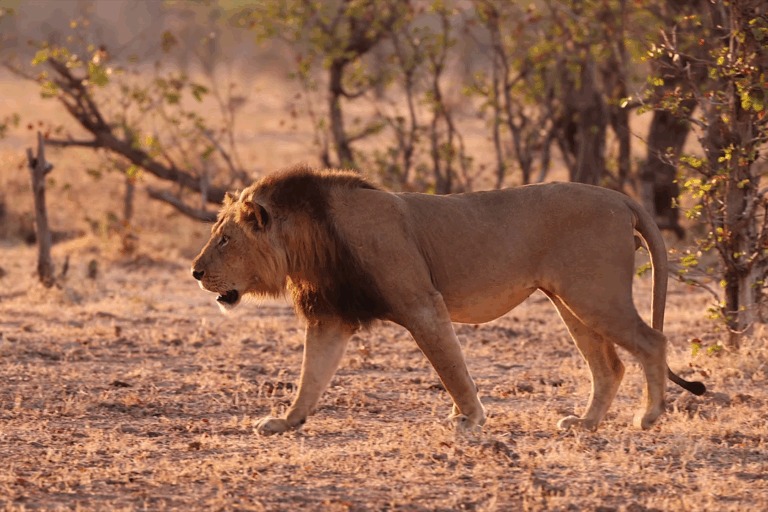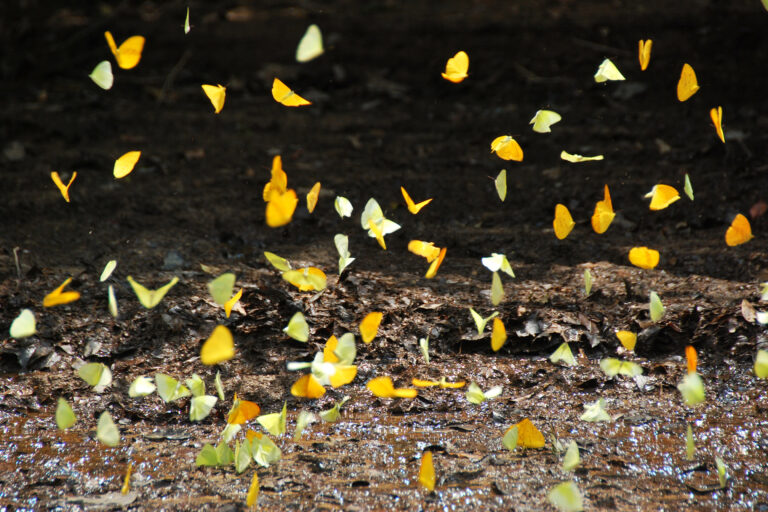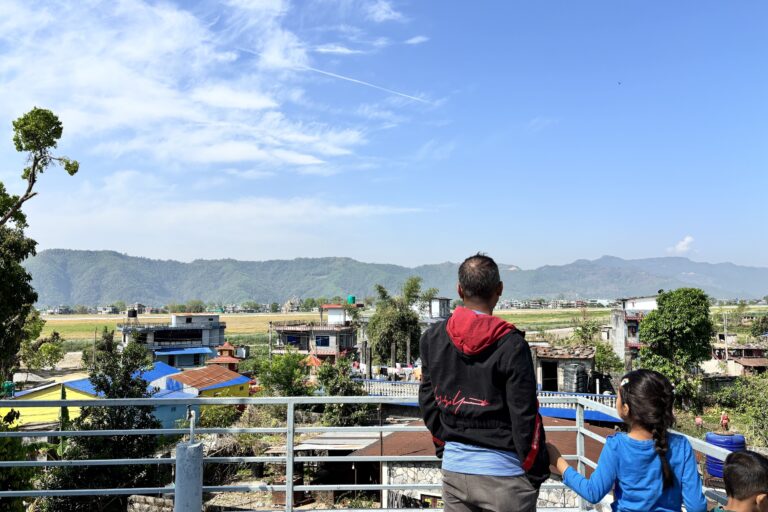- The last wolf in Bangladesh was seen in 1949 – until this year.
- The wolf, an adult male, was killed by local villagers in the Sundarbans, a suboptimal habitat for wolves.
- But could there be more wolves in the Sundarbans? Is there a breeding population? Time will tell.
For Muntasir Akash, it all started with a photo in a news report in early June. The photo showed a canine-like animal, beaten and dead, legs splayed, hanging from makeshift posts. It was killed by local people in the remote village of Taltoli in the Bangladeshi Sundarbans, the world’s largest mangrove forest, straddling both Bangladesh and India.
“Here the story begins,” says Akash, a wildlife biologist at the University of Dhaka. What first struck this expert on carnivorous mammals most was the dead animal’s “white patch around the cheek and throat.”
Akash sent emails to his colleagues, Jan Kamler and William Duckworth, both of whom agreed with Akash’s initial suspicion: the animal was a wolf. The only problem? There are no wolves in Bangladesh.

At least, there hadn’t been a documented wolf in the country since 1949, a time when Bangladesh was still part of Pakistan.
Hooked at this point, Akash reached out to other colleagues, many of whom thought it was a golden jackal (Canis aureus). Jackals are not quite common in Bangladesh.
Akash was able to secure more unpublished photos from the deputy commissioner at the time of Barguna district, where the animal was killed. The new photos increased both his and his colleagues’ belief that this was indeed an Indian wolf (Canis lupus pallipes), a subspecies of the gray wolf (Canis lupus) though there has been ongoing debate as to whether the population in India is a distinct species in its own right.
By the evening of the next day, Akash was on a boat from Dhaka heading toward Taltoli, one of the most far-flung places in the Sundarbans.
Digging up a dead wolf
Getting to Taltoli proved challenging: after the first boat, Akas had to jump on a rickshaw, then transfer to a motorbike, another boat, then a final, third boat to reach the village by lunchtime the next day.
By the time Akash got there, the animal had been dead for a week, its body buried near the local branch office of the Bangladesh Forest Department. With the help of a local ranger, Akash went about the grisly business of digging up the mystery animal.
“On first look on the skull, the idea became firm,” he says. “It could never be a jackal or any lesser canid species. It was a wolf for sure.”
A week of decomposition meant the skin was rotting away; Akash describes it as “greasy” but otherwise “intact.”
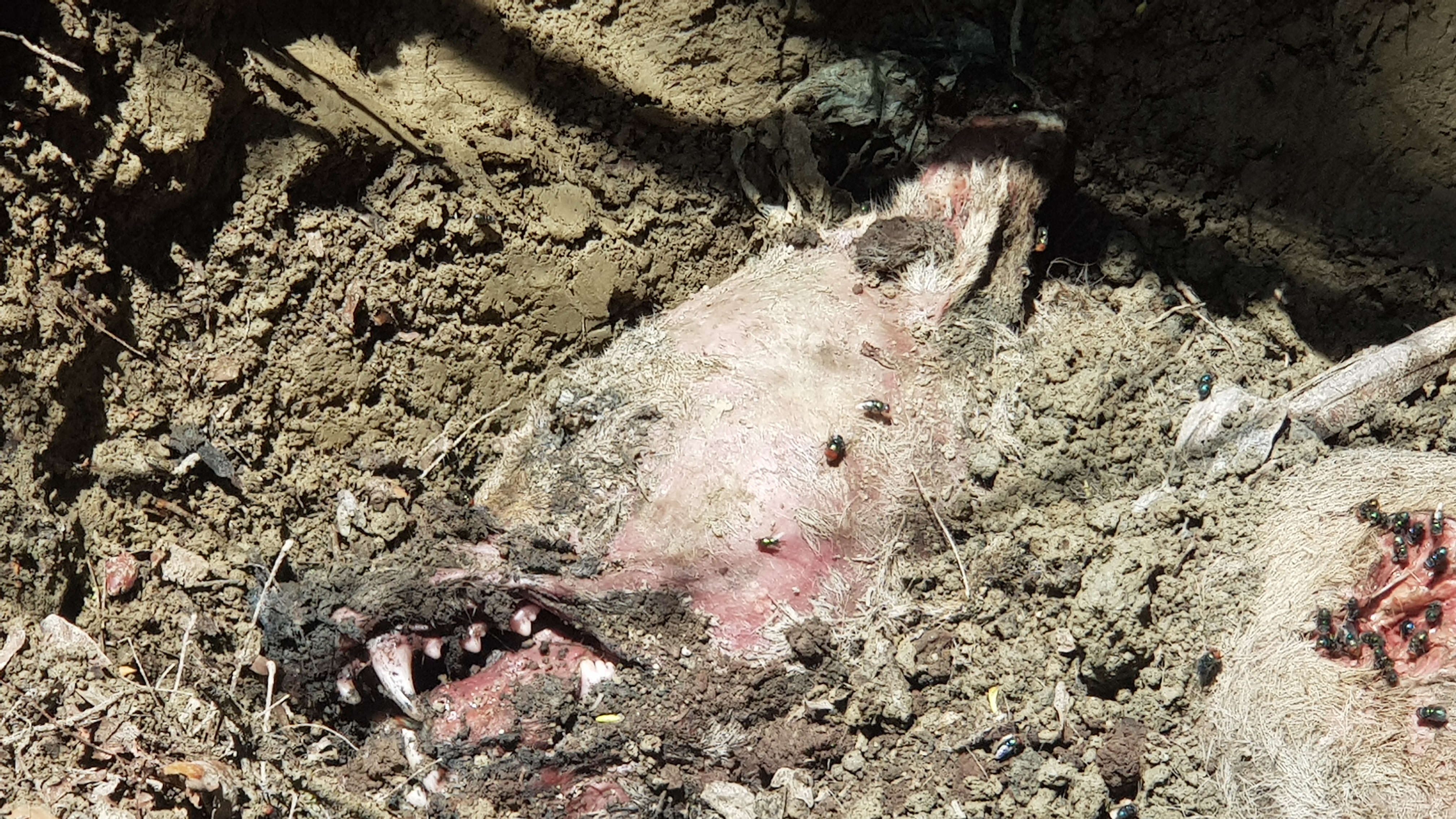
He took samples of hair and tissue from one of the legs. The DNA results, which would come in July, confirmed it: this was no jackal. It was a wolf. The wolf of Bangladesh.
The once-buried body was reburied, though Akash plans to return and dig it up again for measurements.
The wolf’s death — beaten and hung — is not an unusual response to carnivores in Bangladesh.
“[In Bangladesh] the trend is: anything wild and mobile is to be captured and killed if the animal looks like a cat [or] dog. Civets and fishing cats are the most reported species lynched to death in Bangladesh,” Akash says, adding that the work of conservationists and animal rights activities has helped rein in some of the killing, especially of tigers.
Mangrove wolves?
Not only are wolves not supposed to be in Bangladesh anymore, they aren’t supposed to be in the Sundarbans either. Indian wolves are creatures of the grasslands, scrub, deciduous forests and the areas between wilderness and agriculture.
Still, this wasn’t the first wolf recently found among the dense, muddy, watery mangroves. In 2017, wildlife photographer Riddhi Mukherjee took a remarkable photo of a wolf on the Indian side of the Sundarbans, more than 300 kilometers (190 miles) from the nearest known wolf population in Purulia district.

“The 2017 news of wolf from the Indian Sundarbans was in my mind and bolstered me,” Akash says of his quest.
Sometimes animals do weird things, like showing up in strange places. Indian wolves are known to potentially migrate some 300 kilometers from their birthplace. And some animals are just eccentric and spurred to find new territory.
But does that mean the wolf of Bangladesh could have been the same wolf seen in the Indian Sundarbans two years earlier? Is this just surprising behavior from a single wolf, and nothing more?
“This is definitely not the same individual. It can never be,” Akash says. “True, a wolf can cover a great distance. The Sundarbans, on the contrary, is a formation of mangrove islands and compartments separated by creeks, and formidable rivers in cases. To be at Taltoli, that individual [would have] needed to cross the entire Sundarbans, then, one of the largest river mouths of the mangrove, then several localities. An impossible distance to cover.”
According to Akash, local journalist Hairaj Majhi had another theory. The community’s problems with the wolf didn’t start until after Cyclone Fani passed through the region in early May. Then, all of a sudden, livestock were being attacked by an unknown animal; a calf was killed. Some locals believed it was a tiger, of which around a hundred inhabit the Bangladeshi Sundarbans. But “a dog-like animal [was] sighted on four occasions,” Akash says, adding that after a while, “the locals [ran] out of patience and trapped [it].”
Akash says he believes the wolf of Bangladesh got caught up in the cyclone, was swept into this remote region of the Sundarbans, and survived by lying low in a nearby protected area, the Tengragiri Wildlife Sanctuary. It lived there, hunting in the village, before its demise at the hands of the locals.
Akash says he doesn’t believe a wolf pack survives in Tengragiri, because the prey there is sparse (he says there are no deer) and the nearby villages have not experienced recent wildlife conflict. But Akash says he also dismisses the idea that this was some lone wolf, an eccentric that found itself among the mangroves. Instead, he says he thinks this is a howling clue to a previously unknown, unidentified breeding population.
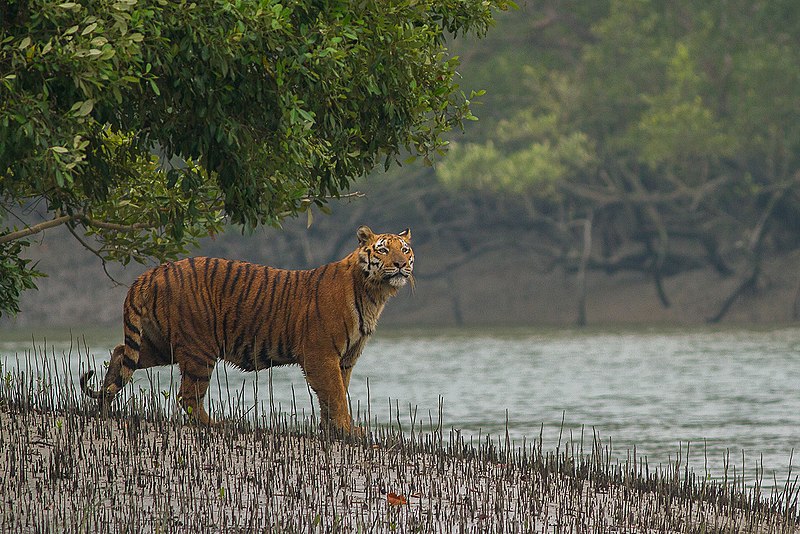
“There must be a population of wolf in the Sundarbans,” he says. The prey is abundant enough in many areas, he says, including plenty of boar and deer. Akash also says he believes this potential cryptic population has already been photographed numerous times during camera-trap surveys for tigers over the past five years. He says he thinks the photos of wolves have simply been erroneously identified as jackals.
Akash is currently in the process of trying to access the camera-trap photos from the Bangladesh Forest Department.
The wolves of Mowgli
But not every expert agrees with Akash about a breeding wolf population in the Sundarbans.
Iravatee Majgaonkar, a wildlife biologist who studies the interaction between wolves and people in India, says it’s unlikely there is a population in the Sundarbans.
“It is possible that this animal was present close to mangrove habitats in the recent past or, since it’s so adaptable, moved through mangrove habitats while dispersing,” she says.

She points both to the wolf’s ability to travel far and wide and its hardiness.
She says it’s really impossible to know how long this wolf might have been in the Sundarbans and whether it was dispersing — looking for a new home and new wolves — or not.
Majgaonkar says it’s also possible this is the same wolf photographed in India in 2017, given both were adult males. However, she adds that even if that’s the case, it would be quite surprising, because it would mean an individual wolf surviving for several years among the mangroves.
Mangroves are suboptimal habitat for Indian wolves, according to Majgaonkar, lacking many of their common prey animals and the large open areas that the wolf has evolved for.
“However, animals are adaptable and they can change their behavior to be able to survive in modified landscapes,” she says.
The most recent estimate of wolves in India was 2,000 to 3,000 animals, but Majgaonkar says that estimate is long out of date.
While wolves are ostensibly legally protected in India, Majgaonkar says “on [the] ground, there isn’t much focus on them in terms of active protection, protected areas, monitoring for population trends.” India’s wolves, who inspired Rudyard Kipling’s characters of Raksha and Rama, the adoptive parents of Mowgli, and Akela and Grey Brother in The Jungle Book, have run into conservation neglect, especially when compared to the country’s other large mammals like tigers and elephants.

However, that may soon be changing: a number of researchers in India are working on the Wild Canids – India Project to map the distribution of wolves, hyenas and other canids across the country and come up with more accurate numbers.
“It is only in recent years that conservation research on Indian wolves has gained some traction,” says Arjun Srivathsa, a doctoral candidate at the University of Florida and a research associate with the Wildlife Conservation Society – India, who, along with Majgaonkar, is working on the project. “Based on preliminary insights, we think that Indian wolf populations may be stable in some regions and declining in other areas.”
Srivathsa says wolves are imperiled by human-wildlife conflict, diseases and possibly hybridization with stray dogs (India has more than 30 million strays, he says), and habitat destruction.
“Unfortunately, natural savannah grasslands and scrublands are termed ‘wastelands’ in India and often diverted for commercial use,” Srivathsa says.
It may be that as wolf populations are losing their normal habitat they are moving wherever they can, including into the Sundarbans.
A wolf in jackal’s clothes?
The Sundarbans wolf may not be a new phenomenon.
In 1953, a local hunter claimed to have killed a wolf in Noakhali, on the edge of the Bangladeshi Sundarbans, though many thought it was a jackal.
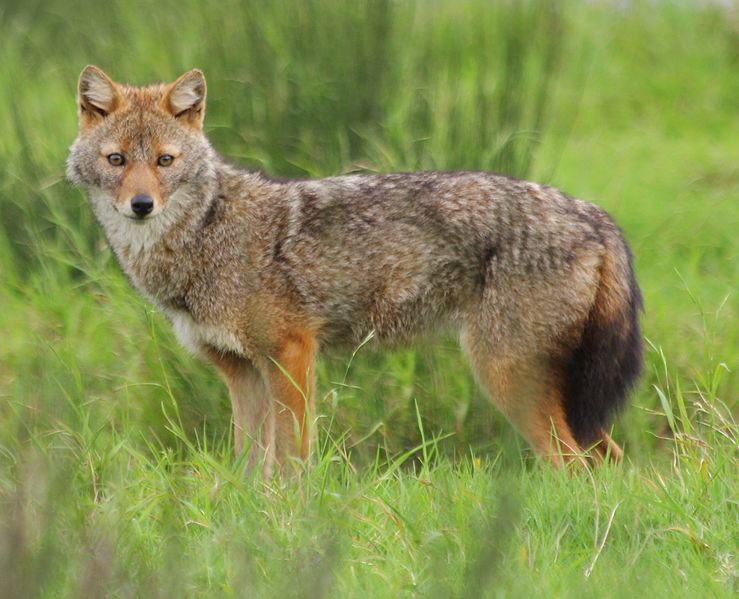
“I think [the hunter] was correct,” Akash says. “There is saying: [the] jackal of the mangrove never howls [because of its] fear of tigers. Who knows what ‘jackal’ [local people] are referring to?”
It may be that wolves never really went fully extinct in Bangladesh. It may be they hunkered down and held on; it may be they posed as jackals and fooled everyone.
It may be.
If Akash is right, it may be that some wolves, under tremendous pressure elsewhere from deforestation and the destruction of grasslands, are turning to a less suitable, but perhaps more secure, habitat: the Sundarbans mangroves. In an attempt to escape humans, the Indian wolf may be evolving some new tricks.

Akash says he believes now is the time to search for this alleged population, including looking at old and future camera traps, surveys for a cryptic population, and interviewing local people.
If a population is there, conservation measures must be put in place, allowing these wolves a chance to thrive — and continue to surprise.
“All in all, there is a viable population of wolf in the Sundarbans — the mangrove wolf — first of its kind,” Akash says. “I can bet everything on their presence.”








